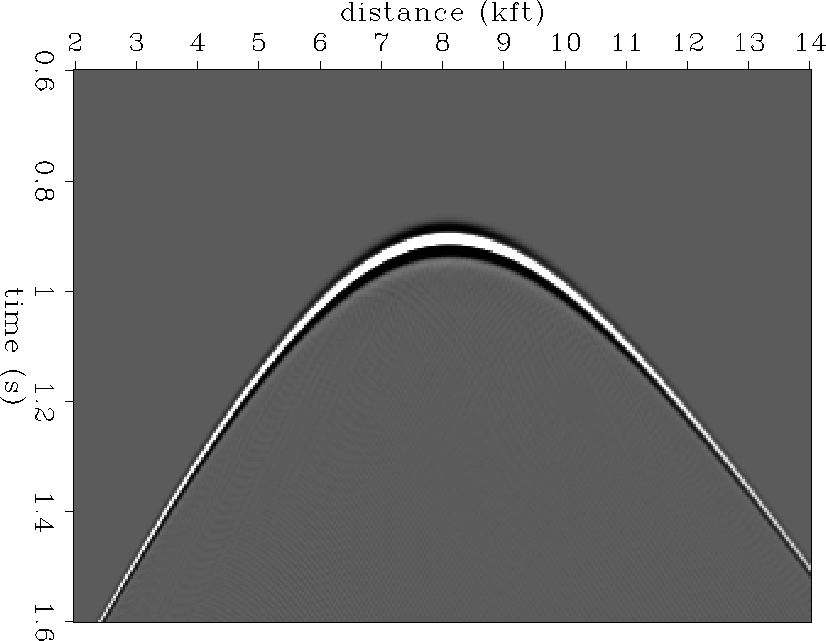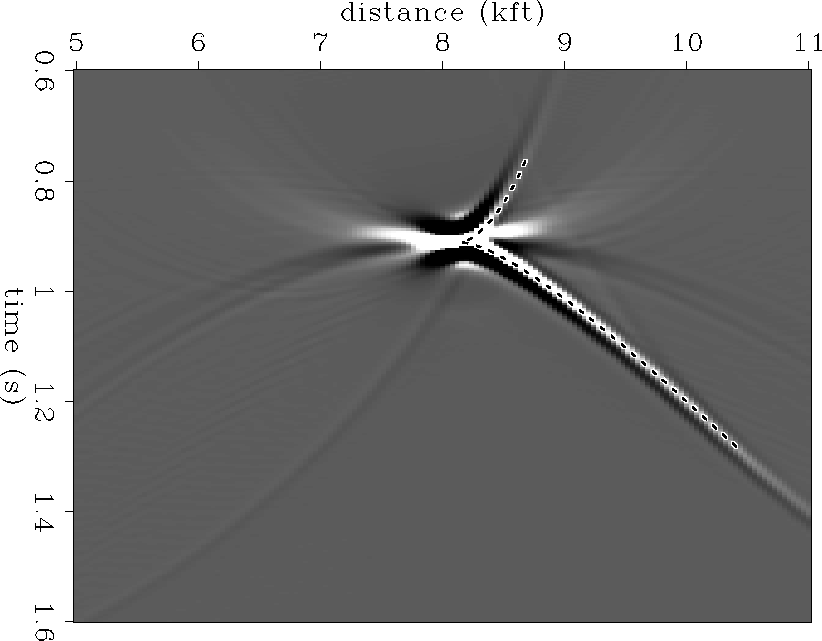 |
Figure 6 Kirchhoff modeling result for the point diffractor model. The kinematics correspond to the ray-tracing result shown in Figure 2.
To confirm the geometrical predictions of plumes, we now turn to wave-equation synthetic experiments on point diffractors beneath the lateral velocity variation shown in Figure 1. A Kirchhoff modeling program and a Kirchhoff datuming program are used to generate synthetic data for time migration. The modeling program is similar to Claerbout's trimo() routine 1992 except that it incorporates topography. The diffractor response is modeled in two steps:
The resulting asymmetric diffraction curve is displayed in Figure 6. The kinematics correspond closely to the ray-tracing result shown in Figure 2. The Kirchhoff migrated image in Figure 7 was generated from this diffraction curve using the RMS velocity that would be derived from a well drilled straight down into the diffractor, as before. Note the distinctive plume response evident in this figure. The common-tangent result is superimposed on the migrated image, showing that the agreement between wave-equation results and geometrical predictions is excellent.
 |
 |